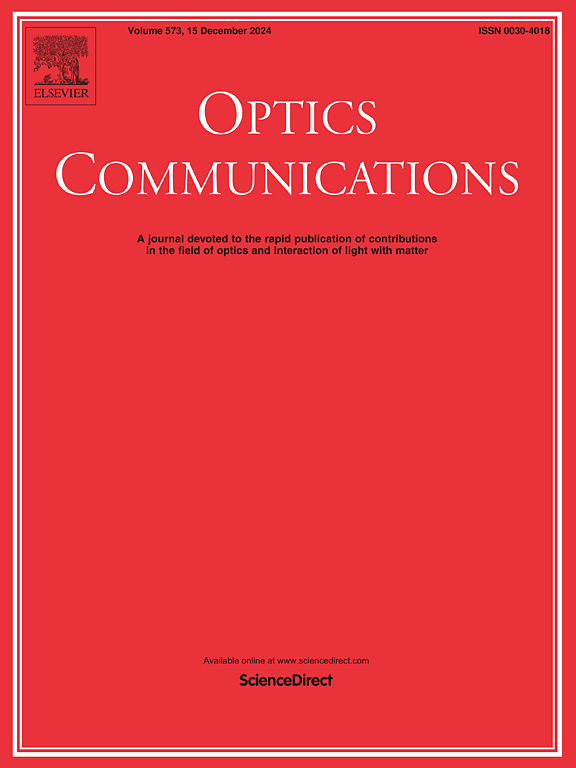Research on high-sensitivity joint bending angle and direction detection sensor based on multi-fiber end-face coupling
IF 2.2
3区 物理与天体物理
Q2 OPTICS
引用次数: 0
Abstract
In the fields of biomedical engineering and intelligent sensing, accurate detection of joint flexion angles and directions holds significant application value. A bending angle detection scheme based on the coupling of single-fiber and multi-fiber within a tube is proposed to achieve simultaneous detection of bending angle and direction. The experimental results show that the output optical power of the optical fiber changes with the bending of the tube, and there is still optical output at the bend angle of 180°. Additionally, the output optical power of the output fiber is correlated with the bending direction, with lower optical loss observed for the output fiber located at the -x direction of the fiber core center. Therefore, the bending direction of the tube can be determined by comparing the output optical loss between fibers. On the other hand, the bending angle can be obtained from the total loss of all output fibers. Experimental results indicate that the sensor possesses high sensitivity of up to 0.181dB/° for the angle range from 0° to 180°, and a linear regression coefficient R2 of 0.993. Additionally, experiments conducted with motors and finger joints have demonstrated the excellent reversibility and rapid response capabilities of the proposed angular sensor, thereby indicating its potential as an effective solution for precise monitoring of joint movements.
求助全文
约1分钟内获得全文
求助全文
来源期刊

Optics Communications
物理-光学
CiteScore
5.10
自引率
8.30%
发文量
681
审稿时长
38 days
期刊介绍:
Optics Communications invites original and timely contributions containing new results in various fields of optics and photonics. The journal considers theoretical and experimental research in areas ranging from the fundamental properties of light to technological applications. Topics covered include classical and quantum optics, optical physics and light-matter interactions, lasers, imaging, guided-wave optics and optical information processing. Manuscripts should offer clear evidence of novelty and significance. Papers concentrating on mathematical and computational issues, with limited connection to optics, are not suitable for publication in the Journal. Similarly, small technical advances, or papers concerned only with engineering applications or issues of materials science fall outside the journal scope.
 求助内容:
求助内容: 应助结果提醒方式:
应助结果提醒方式:


